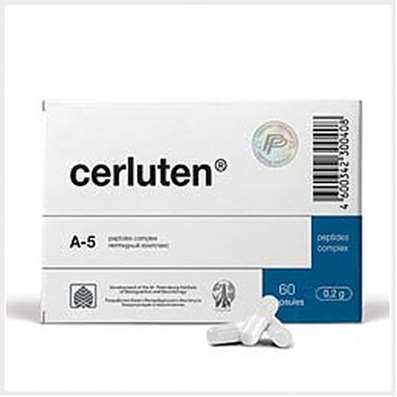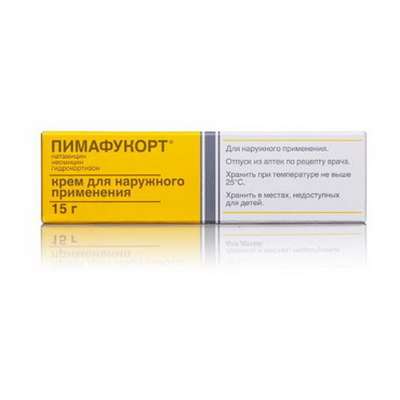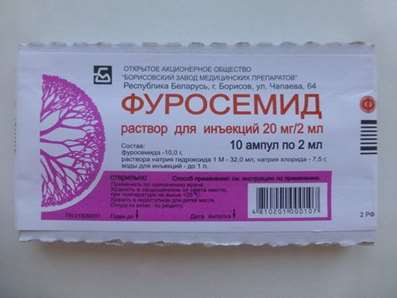Instruction for use: Esomeprazole Canon
I want this, give me price
Active substance Esomeprazol
ATX code A02BC05 Esomeprazol
Pharmacological group
Proton pump inhibitors
Nosological classification (ICD-10)
K21 Gastroesophageal reflux
Biliary reflux esophagitis, gastrocardiac syndrome, Gastroesophageal reflux disease, Gastro-oesophageal reflux disease, Non-erosive reflux disease, syndrome gastrocardiac, Remhelda syndrome, Erosive reflux esophagitis, Ulcerative reflux esophagitis
K21.0 Gastro-oesophageal reflux with oesophagitis
Reflux gastritis, Reflux esophagitis, Erosive and ulcerative esophagitis
K25 Gastric ulcer
Helicobacter pylori, Pain syndrome in gastric ulcer, Pain syndrome in gastric ulcer and duodenal ulcer, Inflammation of the gastric mucosa, Inflammation of the gastrointestinal mucosa, Benign gastric ulcer, The disease of the stomach and duodenum, asotsiirovannoe with Helicobacter pylori, Aggravation gastroduodenita on the background of peptic ulcer, Exacerbation of peptic ulcer, The aggravation of gastric ulcer, The organic gastrointestinal disease, Peptic ulcer of the stomach and duodenum, Postoperative gastric ulcer, Recurrent ulcers, Symptomatic gastric ulcers, Chronic inflammatory disease of the upper gastrointestinal tract, associated with Helicobacter pylori, Helicobacter pylori eradication, Erosive and ulcerative lesions of the stomach, Erosive lesions of the stomach, The erosion of the gastric mucosa, Peptic ulcer disease, Stomach ulcer, Gastric lesion, Ulcerative lesions of the stomach, Symptomatic ulcers of the stomach and duodenum
K26 Duodenal Ulcer
Pain with duodenal ulcer, Pain syndrome in gastric ulcer and duodenal ulcer, The disease of the stomach and duodenum, asotsiirovannoe with Helicobacter pylori, Exacerbation of peptic ulcer, The worsening of duodenal ulcer, Peptic ulcer of the stomach and duodenum, Relapse of duodenal ulcers, Symptomatic ulcers of the stomach and duodenum, Helicobacter pylori eradication, Erosive and ulcerative lesions of the duodenum, Erosive-ulcerative lesions of duodenal ulcers associated with Helicobacter pylori, Erosive lesions of the duodenum, Duodenal ulcer, Ulcerative lesions of the duodenum]
K27 Peptic ulcer, unspecified
Perforation of peptic ulcer, Drug-induced gastrointestinal ulcers, medication ulcers, Peptic ulcer of the digestive tract, Peptic ulcer with Helicobacter pylori, peptic ulcer, Damage of gastrointestinal mucosa caused by NSAID, Symptomatic ulcers digestive tract, stress ulcer, Stress gastric ulcer, Stress damage to the mucous membrane, stress ulcer, duodenal ulcer Stress, Stress ulcer, Stressful GI ulcers, Erosive-ulcerative lesions of the gastrointestinal tract, The erosion of the gastrointestinal tract, Erosion of the mucosa of the upper gastrointestinal tract, The erosion of the gastrointestinal mucosa, gastrointestinal ulcer, ulcer drug, peptic ulcer, postoperative ulcer, stress ulcer, Ulcerative lesions of the gastrointestinal tract, Acute stress ulcer gastrointestinal tract, Symptomatic gastrointestinal ulcers, Complications of peptic ulcers
K31.8.2 * Hyperacidity of gastric juice
Pathological hypersecretion, Hyperacid indigestion, Hyperadic states, Increased secretion of gastric juice, Increased acid formation, Hyperacidosis,Hyper secretion of gastric juice, Increased acidity of gastric juice, High acidity
K86.8.3 * Zollinger-Ellison Syndrome
Adenoma of the pancreas ulzerogennosti, gastrinoma, Zollinger-Ellison Syndrome, gastrinoma
K92.2 Gastro-intestinal bleeding, unspecified
Gastric and intestinal bleeding, Acute bleeding from the upper gastrointestinal tract, gastrorrhagia, Gastrointestinal bleeding, Intraoperative abdominal bleeding, enterorrhagia, Bleeding in the upper digestive tract, Gastrointestinal bleeding, Bleeding from the upper gastrointestinal tract, Bleeding from the gastrointestinal tract, Intraoperative bleeding abdominal, Recurrent bleeding in the digestive tract, Diagnosis of bleeding from the small intestine, peptic ulcer bleeding, Mallory-Weiss syndrome, Recurrent bleeding from peptic ulcers, Bleeding stomach
Composition
Tablets, film-coated enteric-coated 1 tab.
active substance:
esomeprazole magnesium dihydrate 21.8 mg
(in terms of esomeprazole - 20 mg)
excipients: low substituted hyprolosis (hydroxypropylcellulose) - 14 mg; pregelatinized corn starch - 37.2 mg; colloidal silicon dioxide - 2 mg; mannitol - 23 mg; sodium fumarate - 2 mg; MCC - 140 mg
film cover: Opadry transparent (hypromellose (hydroxypropyl methylcellulose) - 6.4 mg, macrogol (polyethylene glycol) - 1.6 mg) - 8 mg; Acryl-Green (methacrylic acid and ethyl acrylate copolymer (1: 1) - 14.52 mg, colloidal silicon dioxide - 0.22 mg, sodium bicarbonate - 0.22 mg, sodium lauryl sulfate - 0.11 mg, ferric oxide yellow - 0.154 mg, indigo carmine dye — 0.176 mg, brilliant blue dye — 0.066 mg, talc — 3.63 mg, titanium dioxide — 2.904 mg) —22 mg; triethyl citrate - 2 mg
Tablets, film-coated enteric-coated 1 tab.
active substance:
esomeprazole magnesium dihydrate 43.6 mg
(in terms of esomeprazole - 40 mg)
excipients: low substituted hyprolosis (hydroxypropylcellulose) - 28 mg; pregelatinized corn starch - 74.4 mg; colloidal silicon dioxide - 4 mg; mannitol - 46 mg; sodium fumarate - 4 mg; MCC - 280 mg
film cover: Opadry transparent (hypromellose (hydroxypropyl methylcellulose) - 12.8 mg, macrogol (polyethylene glycol) - 3.2 mg) - 16 mg; Acryl-Green (methacrylic acid and ethyl acrylate copolymer (1: 1) - 29.04 mg, colloidal silicon dioxide - 0.44 mg, sodium bicarbonate - 0.44 mg, sodium lauryl sulfate - 0.22 mg, ferric oxide yellow - 0,308 mg, indigo carmine dye - 0.352 mg, brilliant blue dye - 0.132 mg, talc - 7.26 mg, titanium dioxide - 5.808 mg) - 44 mg; triethyl citrate - 4 mg
pharmachologic effect
Pharmacological action - inhibiting proton pump.
Dosage and administration
Inside The tablet should be swallowed whole, without chewing, with a sufficient amount of water.
GERD (adults and children from 12 years)
Treatment of erosive reflux esophagitis: 40 mg 1 time per day for 4 weeks. An additional 4-week course of treatment is recommended in cases where after the first course esophagitis does not heal or symptoms persist.
Long-term supportive treatment after healing of erosive reflux esophagitis, prevention of relapse: 20 mg 1 time per day.
Symptomatic treatment of GERD: 20 mg 1 time per day in patients without esophagitis. If after 4 weeks of treatment the symptoms do not disappear, an additional examination of the patient should be carried out. After the symptoms are eliminated, you can switch to the “if necessary” mode of taking the drug - 20 mg 1 time per day when symptoms resume. For patients taking NSAIDs and those at risk of developing stomach ulcers or duodenal ulcers, treatment is not recommended if necessary.
Peptic ulcer and duodenal ulcer (adults)
As part of combination therapy for the eradication of Helicobacter pylori:
- treatment of duodenal ulcers associated with Helicobacter pylori: Esomeprazole Canon 20 mg, amoxicillin 1000 mg and clarithromycin 500 mg. All drugs are taken 2 times a day for 1 week;
- prevention of recurrence of peptic ulcers associated with Helicobacter pylori: Esomeprazole Canon 20 mg, amoxicillin 1000 mg and clarithromycin 500 mg. All drugs are taken 2 times a day for 1 week.
Prolonged acid suppression therapy in patients who have undergone bleeding from peptic ulcers (after iv administration of drugs lowering the secretion of the gastric glands to prevent relapse): Esomeprazole Canon 40 mg 1 time per day for 4 weeks after iv administration of drugs that lower secretion glands of the stomach.
Patients for a long time taking NSAIDs
Treatment of gastric ulcers caused by taking NSAIDs: Esomeprazole Canon 20 mg 1 time per day; duration of treatment is 4–8 weeks.
Prevention of gastric and duodenal ulcers caused by taking NSAIDs: Esomeprazole Canon 20 mg 1 time per day.
Conditions characterized by pathological hypersecretion of the gastric glands, incl. Zollinger-Ellison syndrome and idiopathic hypersecretion: the recommended initial dose of the drug Esomeprazole Canon 40 mg 2 times a day. Further, the dose is selected individually, the duration of treatment is determined by the clinical picture of the disease.
There is an experience of using from 80 to 160 mg / day of esomeprazole, when taking the drug more than 80 mg / day, it is recommended to divide the required dose into 2 doses.
Renal failure: dose adjustment of the drug Esomeprazole Canon is not required. However, experience with the use of esomeprazole in patients with severe renal insufficiency is limited; therefore, caution should be exercised in prescribing this category of patients.
Renal failure: dose adjustment of the drug Esomeprazole Canon is not required. However, experience with the use of esomeprazole in patients with severe renal insufficiency is limited; therefore, caution should be exercised in prescribing this category of patients.
Hepatic impairment: in case of hepatic impairment of mild to moderate severity, dose adjustment is not required. For patients with severe hepatic impairment, the maximum daily dose should not exceed 20 mg.
Elderly patients: dose adjustment is not required.
Release form
Tablets, film-coated enteric-coated, 20 mg and 40 mg. In a blister strip of PVC film, PVC film / polyvinylidene chloride film, PVC film / polychlorotrifluoroethylene film or aluminum multilayer foil and aluminum printed lacquer foil in 7, 10 or 14 pcs. 1, 2, 4 blister packs of 7, 10 or 14 pcs. in a pack of cardboard.
Pharmacy sales terms
On prescription.
Storage conditions
In a dry, dark place at a temperature of no higher than 25 ° C.
Keep out of the reach of children.
Shelf life
2 years.
Do not use after the expiration date printed on the package.

 Cart
Cart





